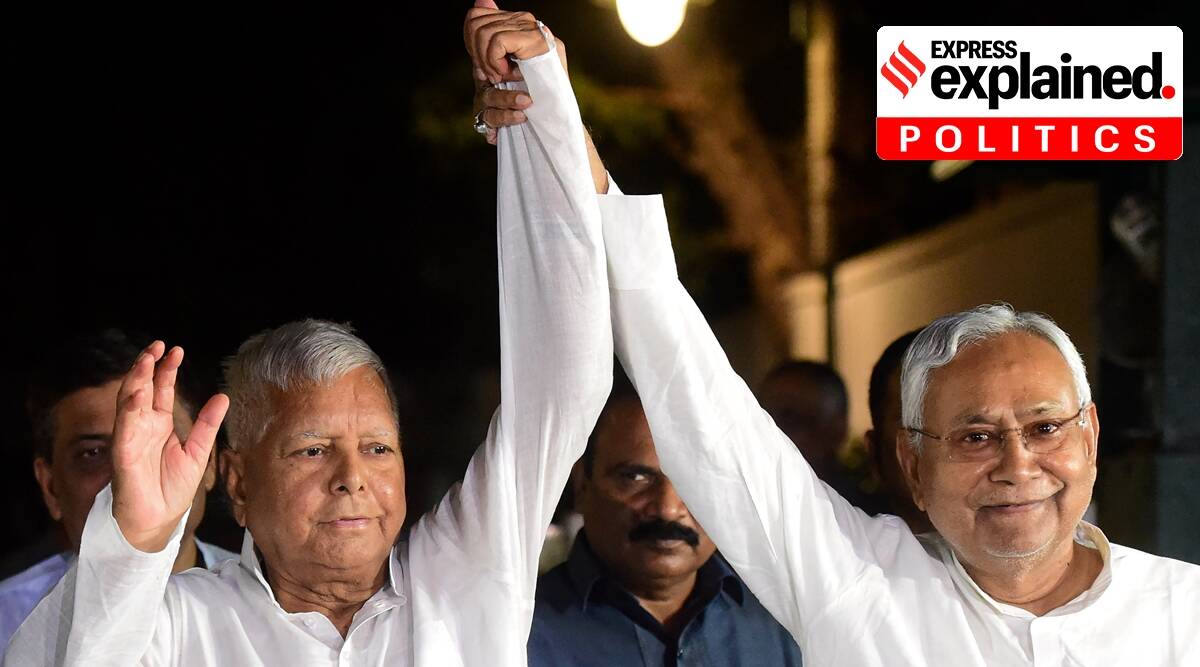The Kurmis: a political historical past

The rise within the visibility and profile of Nitish Kumar in nationwide politics ever since he dumped the BJP and joined palms with Lalu Prasad has spotlighted the OBC Kurmi neighborhood to which the Bihar Chief Minister belongs. Kurmis are a smaller neighborhood than Yadavs, they usually haven’t all the time had a cordial relationship. However the political aspiration of Kurmis has spiked in current weeks — Yadavs for the primary time seem keen to just accept them as “elder brothers” — and if the bonhomie between Nitish and Lalu continues, the BJP may want some new social engineering manoeuvres in Bihar and UP quickly.
The neighborhood
Kurmis are a landowning farming neighborhood whose standing varies from place to position. The Individuals of India sequence edited by Okay S Singh refers to Kurmis as “progressive farmers” who “avail of most advantages of all the event schemes out there within the space and area”.
In contrast to Yadavs, Kurmis use all kinds of surnames like Patel, Verma, Sachan, Gangwar, Katiyar, Baiswar, Jaiswar, Mahto, Prasad, Sinha, Singh, Pradhan, Baghel, Chaudhary, Patidar, Kunbi, Kumar, Patil, Mohanti, Kanaujiya, Chakradhar, Niranjan, Patanwar, and Shinde, and so on.
Some Kurmi surnames are utilized by different communities as nicely, making it troublesome to establish a Kurmi by title alone. Typically they use no surname in any respect.
Kurmis are distributed throughout a number of states — Uttar Pradesh, Bihar, Odisha, Maharashtra, Gujarat, Chhattisgarh, Madhya Pradesh, West Bengal, Jharkhand, Goa, and Karnataka. Apart from Nitish in Bihar, the Congress chief minister of Chhattisgarh, Bhupesh Baghel, can be Kurmi.
Their caste standing
In most states, Kurmis belong to the Different Backward Courses (OBC) in each the central and state lists for reservations.
In Gujarat, Patels, who’re linked to Kurmis, are within the basic class, and have been demanding OBC standing. In West Bengal, Odisha, and Jharkhand — the place Kurmi is written as ‘Kudmi’ — Kurmis need to be included amongst Scheduled Tribes.
Illustration in govt
No information can be found on the illustration of assorted sub-castes in authorities jobs. However in 2018, the Justice G Rohini Fee set as much as sub-categorise OBCs analysed information on 1.3 lakh central jobs given below the OBC quota over the 5 previous years, and OBC admissions to central larger training establishments together with universities, IITs, NITs, IIMs and AIIMS over three years, and reportedly discovered that the primary beneficiaries have been Yadavs, Kurmis, Jats (Jats in Rajasthan, besides these in Bharatpur and Dholpur districts, are within the central record of OBCs), Sainis, Thevars, Ezhavas and Vokkaligas.
The Indian Categorical has reported earlier that the evaluation discovered that whereas Yadavs have important illustration within the safety forces and police and so on, Kurmis, notably from UP and Bihar, have gotten higher illustration within the civil providers, and in medical schools and universities.
Kurmis in Bihar
In Bihar, UP, Odisha, Maharashtra, and Chhattisgarh, Kurmis represent a major political pressure. In pre-independence Bihar, a political entrance known as Triveni Sangh shaped by a Yadav (Jagdev Prasad Yadav), a Kurmi (Shiv Pujan Singh), and a Kushwaha (Yadunandan Prasad Mehta) chief took half within the 1937 elections.
Shiv Pujan Singh had a large following amongst his castepersons. Outstanding Kurmi leaders from Bihar (together with Jharkhand) in later years embrace former MP and Governor Siddheshwar Prasad; former MP and a founder chief of the Jharkhand Mukti Morcha (JMM) Binod Behari Mahto who sought to hyperlink Shivaji with the Kurmis of North India via an organisation known as Shivaji Samaj; and Satish Prasad Singh, who grew to become the primary Kurmi chief minister of Bihar in 1968, albeit for simply 4 days.
The Yadav management of Bihar’s OBCs was established by Chief Ministers B P Mandal and Daroga Prasad Rai earlier than Lalu’s decade-long dominance, which was finally ended by Nitish Kumar. After the rise of Lalu and Mulayam Singh Yadav in Bihar and UP respectively, the Kurmis in these states aligned with higher castes to offer themselves a political leg-up. Nitish specifically utilised the detest for Yadavs in North India to tie up or break with the BJP as and when he wished.
Kurmis in UP
The BJP’s predecessor, the Bharatiya Jana Sangh (BJS), promoted OBC leaders earlier than their management handed to Chaudhary Charan Singh who broke with the Congress to type the Jan Congress (which later grew to become the Bharatiya Kranti Dal, Bhartiya Lok Dal, and so on). The finance minister in Charan Singh’s first authorities in UP (April 1967) was an Ambedkarite Kurmi from Kanpur known as Ram Swarup Verma. One other distinguished Kurmi chief of the a long time of the 60s and 70s in UP was Jairam Verma.
No Kurmi has change into chief minister of UP to this point. Beni Prasad Verma was thought of quantity 2 to Mulayam within the Samajwadi Get together for a number of years. He joined the Congress for a couple of years and have become a Union Minister within the UPA-II authorities. Subsequently, Sonelal Patel, a Kurmi chief, left the BSP and shaped the Apna Dal, the 2 factions of which at the moment are led by his two daughters, Union Minister Anupriya Patel and SP MLA Pallavi Patel. Pallavi and her mom Krishna Patel try to strengthen ties with Nitish Kumar in UP.
The variety of Kurmis within the UP Meeting is presently 41, a file excessive, up from 34 in 2017. Kurmi leaders contesting on SP tickets defeated three ministers of the Yogi Adityanath authorities. From the BJP, 22 Kurmis gained the elections. That is the second straight Meeting in UP wherein Kurmis outnumber Yadavs, though the variety of Yadav MLAs elevated from 17 in 2017 to 25 in 2022. The UP presidents of each the SP and BJP, Naresh Uttam Patel and Swatantra Dev Singh respectively through the Meeting elections, have been Kurmis.
There isn’t a present information, however a Social Justice Committee arrange by then Chief Minister Rajnath Singh in June 2001 estimated that OBCs constituted 43.13 per cent of UP’s inhabitants, of which Yadavs have been 19.4 per cent and Kurmis 7.46 per cent.
Nitish has lengthy been seen as having nationwide political ambitions, and Lalu’s household, fighting allegations of corruption, seems to have fortunately accepted the management of Lalu’s “chhota bhai”, no less than for now. What impression this has on electoral outcomes in UP, nevertheless, stays to be seen.




